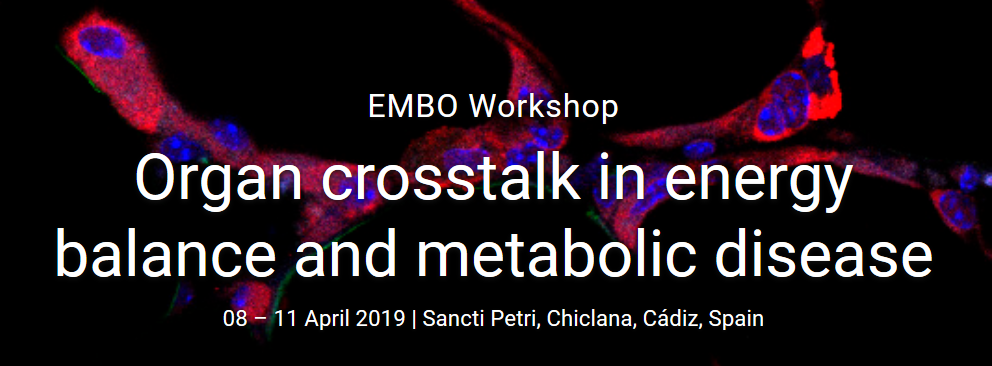Guadalupe Sabio asegura que «uno de los problemas a los que nos enfrentamos es cómo activar la grasa parda sin producir efectos secundarios en el corazón».
[read more in El País]
at the CNIO
Guadalupe Sabio asegura que «uno de los problemas a los que nos enfrentamos es cómo activar la grasa parda sin producir efectos secundarios en el corazón».
[read more in El País]
We are organizing an EMBO Workshop to provide the most important and up-to-date research in the field of metabolism. The workshop will focus on understanding the recent progress in adipocyte biology (cell fate and browning), liver metabolism including steatosis and the role of the central nervous system in the control of the energy homeostasis. Special emphasis will be done to highlight the importance of the organ crosstalk and how signalling pathways in one tissue could affect the metabolism in other tissue.
The goals of this EMBO Workshop are to provide important new insights into the primary pathogenesis of these disorders, and especially focus on those that might lead to new therapies.

EMBO Workshop on organ crosstalk in energy balance and metabolic disease.
Nuria Matesanz, Ivana Nikolić, Magdalena Leiva, Marta Pulgarín-Alfaro, Ayelén M. Santamans, Edgar Bernardo, Alfonso Mora, Leticia Herrera-Melle, Elena Rodríguez, Daniel Beiroa, Ainoa Caballero, Elena Martín-García, Rebeca Acín-Pérez, Lourdes Hernández-Cosido, Luis Leiva-Vega, Jorge L. Torres, Francisco Centeno, Angel R. Nebreda, José Antonio Enríquez, Rubén Nogueiras, Miguel Marcos & Guadalupe Sabio.
Adipose tissue has emerged as an important regulator of whole-body metabolism, and its capacity to dissipate energy in the form of heat has acquired a special relevance in recent years as potential treatment for obesity. In this context, the p38MAPK pathway has arisen as a key player in the thermogenic program because it is required for the activation of brown adipose tissue (BAT) thermogenesis and participates also in the transformation of white adipose tissue (WAT) into BAT-like depot called beige/brite tissue.
Here, using mice that are deficient in p38α specifically in adipose tissue (p38αFab-KO), we unexpectedly found that lack of p38α protected against high-fat diet (HFD)-induced obesity. We also showed that p38αFab-KO mice presented higher energy expenditure due to increased BAT thermogenesis. Mechanistically, we found that lack of p38α resulted in the activation of the related protein kinase family member p38δ.
Our results showed that p38δ is activated in BAT by cold exposure, and lack of this kinase specifically in adipose tissue (p38δFab-KO) resulted in overweight together with reduced energy expenditure and lower body and skin surface temperature in the BAT region. These observations indicate that p38α probably blocks BAT thermogenesis through p38δ inhibition. Consistent with the results obtained in animals, p38α was reduced in visceral and subcutaneous adipose tissue of subjects with obesity and was inversely correlated with body mass index (BMI).
Altogether, we have elucidated a mechanism implicated in physiological BAT activation that has potential clinical implications for the treatment of obesity and related diseases such as diabetes.
© 2024 Sabio lab
Theme by Anders Norén — Up ↑